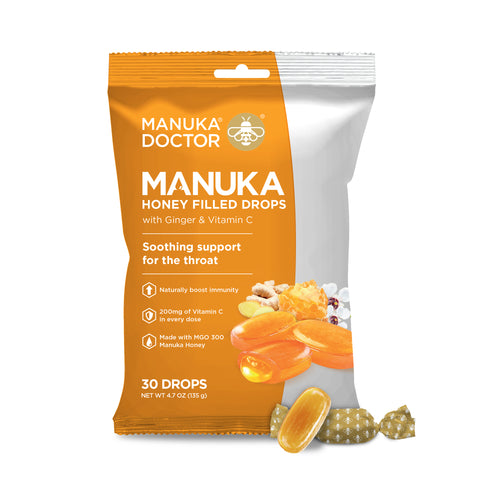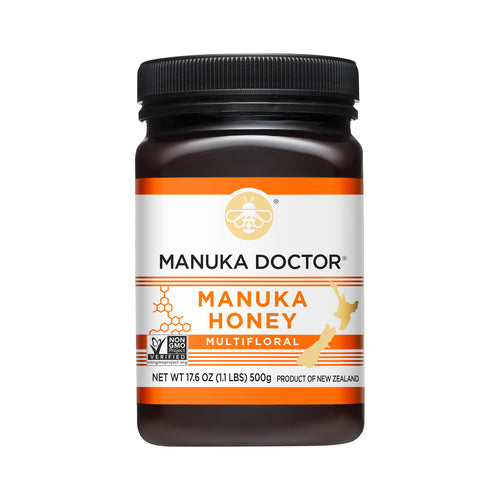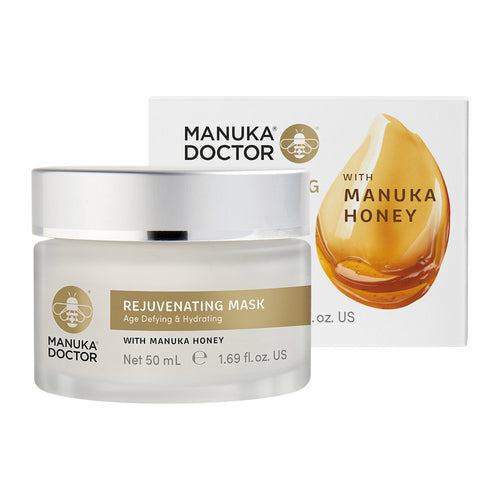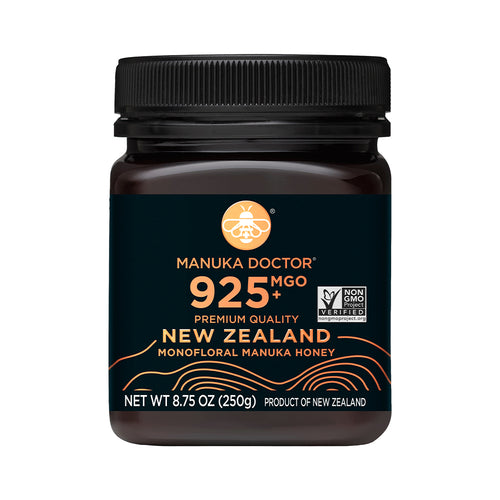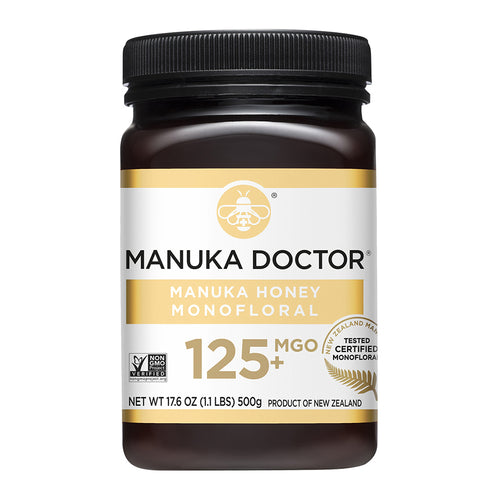Royal Jelly isn’t the Queen’s favourite pudding – as far as we know – but it’s still important, thanks to its numerous health benefits. And when it comes to skincare, Royal Jelly is a major multitasker, known for its anti-ageing, antibacterial and wound-healing properties.
But what exactly is it, and how can it help your skin? Read our round-up of six fascinating facts about Royal Jelly.
1. It’s not just for queen bees
Royal Jelly is a sticky white substance produced by worker bees. It’s fed to both honeybee larvae and queen bee larvae after they hatch. Then, after two or three days, the honeybee larvae are no longer fed Royal Jelly while the queen larvae will continue to eat it. The queen then feeds exclusively on Royal Jelly for the rest of her life, which can last several years.1

2. It contains it’s own unique proteins
There are a number of different nutrients in Royal Jelly: water (50-60%), proteins (18%), carbohydrates and sugars (15%), fats (3% to 6%), minerals (1.5%), and small amounts of vitamins including B2, B3 and B7 – all essential for healthy skin.2 It also contains nine exclusive proteins, called major royal jelly proteins (MRJPs), and fatty acids.3 It’s these nutrients that are thought to give Royal Jelly its health-boosting effects.
Try a new Manuka recipe today!
3. It’s a powerful antioxidant
Along with many other ingredients produced by the hive, like Manuka Honey, Royal Jelly is a potent antioxidant. Studies have found it is rich in flavonoids and polyphenols, plant compounds that have significant antioxidant properties.4 This means it can help fight the damage caused by free-radicals, including the appearance of wrinkles, and conditions associated with ageing such as diabetes and dementia. Experts believe the longevity-enhancing benefits of Royal Jelly are what give it this anti-ageing quality.

4. It can beat dry skin
Many moisturisers will help soothe dry, damaged skin but a particular fatty acid found in only Royal Jelly can actively boost skin’s hydration levels. Evidence shows that 10-hydroxy-decenoic acid (10HDA) could restore the skin’s barrier, reduce inflammation, and significantly increase moisture content in the upper layer of skin – up to 60% more hydration in just 21 days, according to one study.5
5. It can increase your collagen levels
Collagen is the skin’s internal ‘elastic’, but levels naturally start to drop as we get older. Step forward Royal Jelly – Korean researchers discovered that it can help increase collagen levels within skin cells,6 while another Korean study found it can speed up skin cell renewal, boosting collagen production and helping to protect against UV damage.7

6. It’s a natural acne-fighter
Royal Jelly also has ‘remarkable antibacterial properties’, according to a major review of clinical trials.8 This makes it an effective anti-acne ingredient – one of the causes of acne is certain bacteria that live on the skin. Royal Jelly’s anti-inflammatory properties can also help calm and soothe acne spots, while it can regenerate skin cells to tackle acne scars, too.If all those facts have made you keen to give Royal Jelly a go, the ApiClear Skin Treatment Serum contains Royal Jelly, plus other ingredients designed to improve blemish-prone skin. The ApiNourish Revitalising Day Cream SPF 15 is also rich in Royal Jelly and is one of our highest-rated skincare products, too.
Sources
1. Food and Agriculture Organization of the United States. Value-added Products from Beekeeping. http://www.fao.org/3/w0076e/w0076e16.htm
2. Viuda-Martos M, Ruiz-Navajas Y, Fernández-López J, Pérez-Alvarez JA. J Food Sci. 2008 Nov;73(9):R117-24. Functional properties of honey, propolis, and royal jelly. https://onlinelibrary.wiley.com/doi/full/10.1111/j.1750-3841.2008.00966.x
3. Cornara L, Biagi M, Xiao J, Burlando B. Front Pharmacol. 2017 Jun 28;8:412. Therapeutic Properties of Bioactive Compounds from Different Honeybee Products. https://www.ncbi.nlm.nih.gov/pmc/articles/PMC5487425/
4. Kocot J, et al. Oxid Med Cell Longev. 2018 May 2;2018:7074209. Antioxidant Potential of Propolis, Bee Pollen, and Royal Jelly: Possible Medical Application. https://www.ncbi.nlm.nih.gov/pmc/articles/PMC5954854/
5. Duplan H, et al. Eur J Dermatol. 2011 Nov-Dec;21(6):906-15. Effects of Hydroxydecine(®) (10-hydroxy-2-decenoic acid) on skin barrier structure and function in vitro and clinical efficacy in the treatment of UV-induced xerosis. https://mdr.buzz/2z2nRXY
6. Park HM, et al. J Med Food. 2011 Sep; 14(9):899-906. Royal jelly protects against ultraviolet B-induced photoaging in human skin fibroblasts via enhancing collagen production. https://www.ncbi.nlm.nih.gov/pubmed/21812645
7. Juyoung K, et al. Nutr Res Pract. 2010 Oct; 4(5):362-368. Royal jelly enhances migration of human dermal fibroblasts and alters the levels of cholesterol and sphinganine in an in vitro wound healing model. https://www.ncbi.nlm.nih.gov/pmc/articles/PMC2981718/
8. Fratini F, Cilia G, Mancini S, Felicioli A. Microbiol Res. 2016 Nov;192:130-141. Royal Jelly: An ancient remedy with remarkable antibacterial properties. https://www.sciencedirect.com/science/article/pii/S0944501316300830
